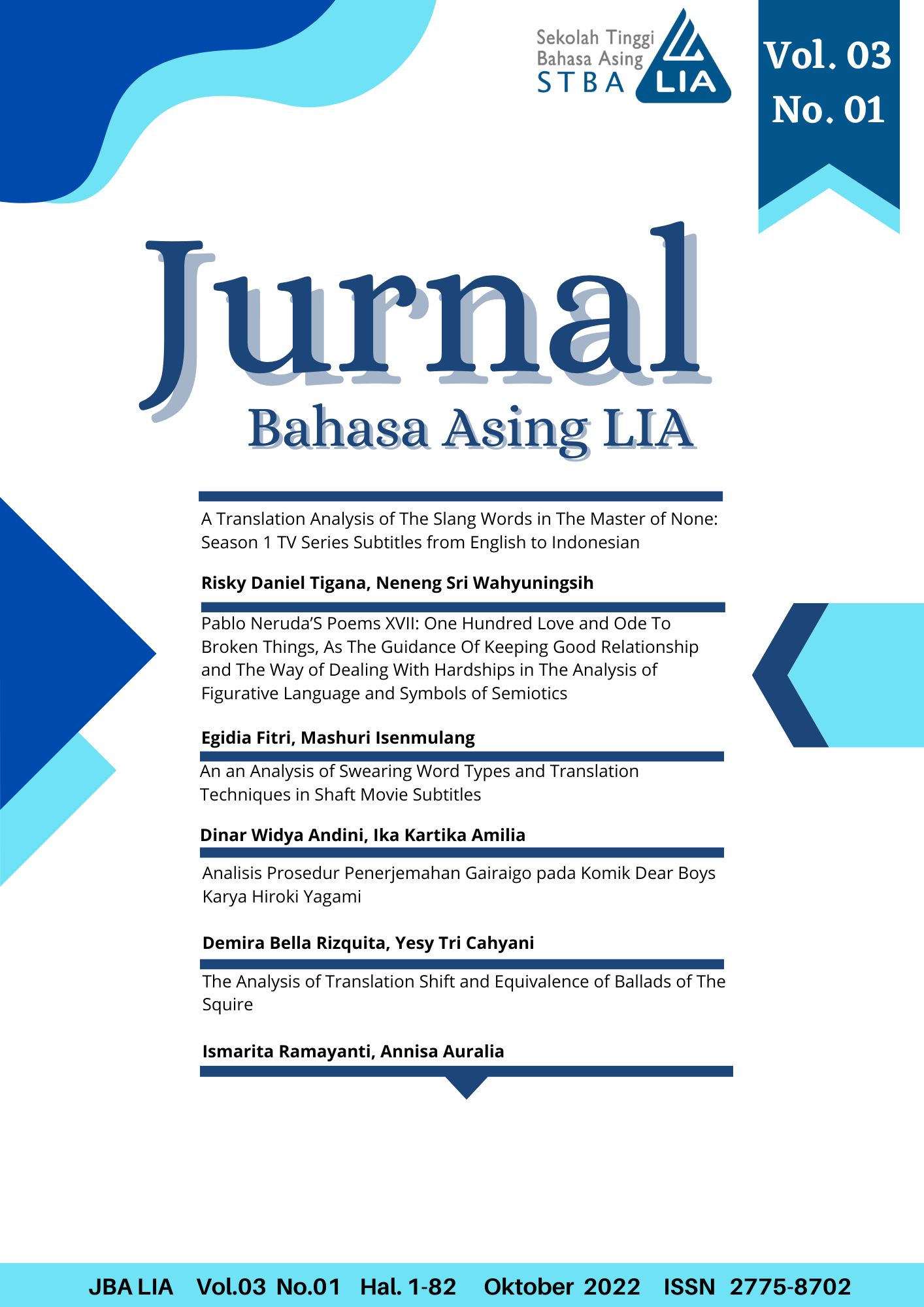The Analysis of Translation Shift and Equivalence of Ballads of the Squire
Keywords:
structure shift, class shift, unit shift, intra-system shift, formal and dynamic equivalence, ballad translationAbstract
This research aims to identify the category shift and analyze the translation equivalence in Ballads of the Squire. The qualitative method is utilized for the twenty data findings. The results show twelve data of structure shift, four data of class shift, six data of unit shift, and nine data of intra-system shift. Structure shift is the most frequent shift that occurs due to the different sequences of elements in both languages. Another finding is that there are 21 data of formal equivalence and 10 data of dynamic equivalence. Formal equivalence is the most frequent equivalence because the translation closely matches the representation in the source language with minimum alteration in the target language. The translation remains close to the original content for the target audience to grasp the essence of the ballad. In conclusion, a ballad can be translated by going for a close translation to show what happened or by paraphrasing to make it sound natural in the target language.



